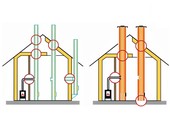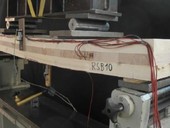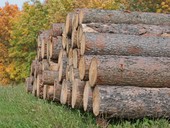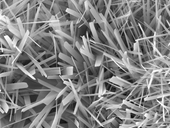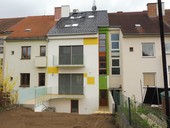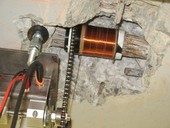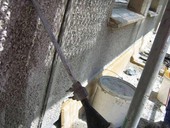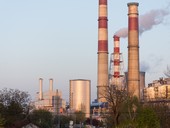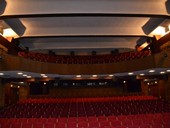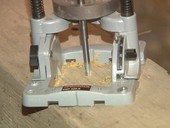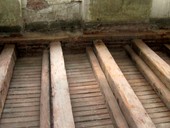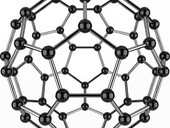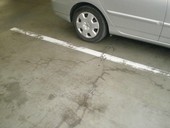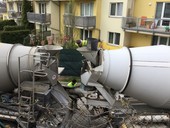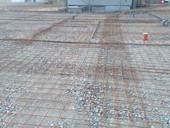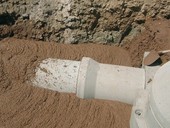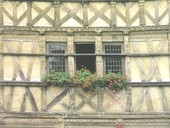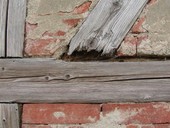The detail of the chimney system passage is one of the possible details, from a fire point of view, that occurred due to the installation of new chimney systems in to the construction of the building. The chimney system passing through the combustible structure is one of the most dangerous details in the building, from a fire safety point of view, and as practice shows, is often very underestimated. An appropriate solution for the chimney passage requires the knowledge and correct design, as well as the realization and consequently correct use of the thermal appliance and the chimney system. The article deals with passage according to the requirements of the national standards for fire segments and design according to STN EN for chimneys.
Archiv článků od 21.8.2017 do 26.2.2018
The text describes why and under what conditions the use of beech wood in building structures. Given the legislative and experimental requirements for verification of properties of beech sorting into classes of forts "D". Evaluation of the quality beech wood over the strength of the reliable design, production technology class predictive level as well as the durability of wooden building elements.
Article deals with finding of physical and mechanical properties of timber at various moisture and it also verifies addictions of single properties on moisture content of timber. In experimental part of this thesis, the density, the dimensional and volumetric swelling and the compressive strength parallel to fibre will be determined on test samples. After evaluating all the tests, the graphs of these parameters depend on various samples of wood moisture determined by weight will be created.
Tobermorite is the main mineral compound of AAC. It increases its mechanical properties. There needs to be done research of influence of type of silica components on the mineralogical compound of AAC. In the presence study, we examine the usage of nature and artificial silicious materials. Closure of the study will be design of the optimal raw material composition, also hydrothermal treatment of autoclaved aerated concrete.
In December of year 2016 has been finished the extensive reconstruction of the multi-family house built in the thirties of last century, located in the district Žabovřesky of the city Brno. Investor with architect desired the modern appearance of interior and facade of the house, which involved a number of difficult renovations and new structures that had to be consulted with structure engineer. The significant steps of the reconstruction of the multi-family house are described in detail in this contribution.
In many practical cases it is important to know the actual value of tensile forces in prestressed elements of civil engineering structures. Main conclusions from experiments which were carried out within verification process and in situ application of the new method for an experimental estimation of the tensile force are described in the paper. The method is suitable for new structures and especially for existing ones.
Industrial chimneys are civil engineering works, which in addition to static and dynamic effects, direct and indirect loads, are also exposed to significant non-stationary environmental loads. Analysis of their durability focuses on the evaluation of vertical cracks, corrosion of concrete and reinforcement, which have a decisive influence on the resistance of the chimney's shaft with regard to the ultimate and serviceability limit states, as well as their durability.
The article describes the methods of the surveying data and documentation production. The documentation is used for the process of planning, realisation and reconstruction of transport, energetic, industrial, ecologic and public objects. The documentation is also used in the remediation process and the protection of the buildings and historical objects. In these processes, it is necessary to know the spatial dimension – location data, the location of these objects on the Earth's surface and shape and dimensions of these objects. The activities that lead to the realisation, reconstruction and remediation of building objects require a quality maps, photogrammetric images and geodetic models (3D models), which are mostly realised in a suitable interactive graphic PC system in 3D digital form.
The paper deals with structural-technical survey of Scala cinema in Brno. It is a historic building completed in 1928. The main purpose of the diagnostic survey was passportisation of structure´s defects, determine the quality of concrete and reinforcement, assessment of defects and failures causes, evaluate the condition of the ceiling structure in relation to the considered reconstruction above cinema.
The paper discusses approaches to safety assessment of historic timber structures using testing of very small specimens extracted from a historic structure or by direct in-situ testing. The presented methods must to take into account conditions given by the EN 16085. They further consider environmental influences and correlations of characteristics achieved by various SDTs.
The paper shows reasons for carrying out restoration of historic wooden ceiling using “dry method” – interaction between historic wooden beams and wood-based panels. This article summarizes the process of reconstruction of historic wooden ceilings, describes the problems to be addressed and it summarizes experience with completed ceilings in Brno,Czech Republic.
The possibilities of using nanomaterials are quite broad – from increasing the hydrophobicity and photostability of surfaces, through improving the mechanical properties of traditional materials, aiding in the diagnosis and therapy of certain diseases, repairing damaged parts of the tissue, and solving problems in decontamination of the environment. Intensive research also takes place in their applications to increase the resistance of wood to wood-boring fungi and wood-destroying insects. Nanomaterials, including nanocellulose, are perspective in the field of wood fire protection, which may be important in the evolving trend of wood building construction.
The composite materials for strengthening/reinforcement a concrete has become the new construction product set up for compulsory verification pursuant to Act No. 22/1997 Coll. (č. 22/1997 Sb.) as amended by Government Ordinance No. 163/2002 Coll. (č. 163/2002 Sb.) as amended by Government Decree No. 312/2005 Coll. and No. 215/2016 Coll (č. 312/2005 Sb. a č. 215/2016 Sb.) This reinforcement exists in several different types, and accordingly, it also has significantly different properties which must be strictly respected in its use.
Despite efforts to maintain quality during the construction of reinforced concrete structures, it is relatively common for improper reinforcement to be used contradicting the project, which can lead to serious structural defects. It is then up to non-destructive testing methods to prove these defects. The key is to choose the appropriate method and device for the task.
The paper describes the technology of liquefaction and stabilization of soils that are created in the excavation works of engineering networks. Liquefied grout could be used to fill even the less accessible spaces of utility networks. For the re-use of the excavated soil in a liquefied form, is necessary its pre-treatment, which consists in stabilizing by the suitable stabilizing additive. The mixture is furthermore required the liquefaction by using a suitable liquefying additives. Suitable for stabilization and soil liquefaction it seems the use of fly ash, as is mentioned below in the paper.
zpět na aktuální články
